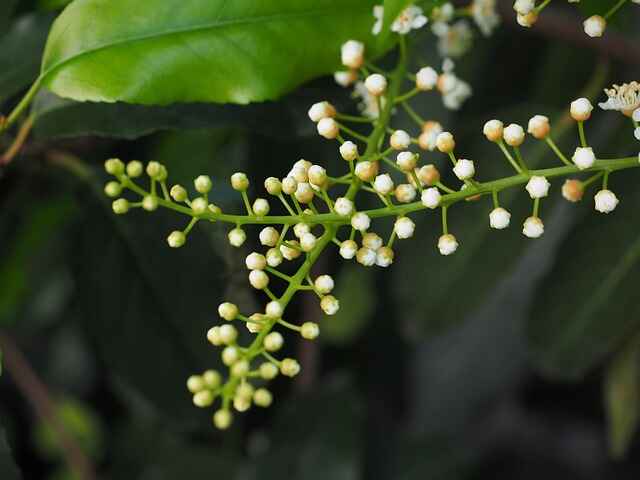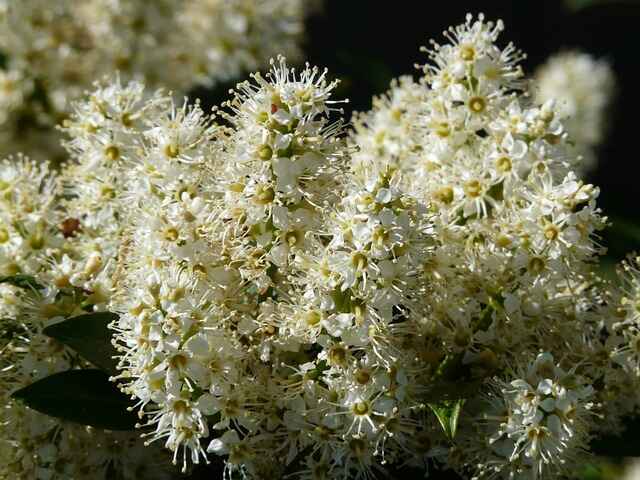Lodhra, also known as the botanical name of Symplocos racemosa roxb, is an ancient medicinal plant in the Ayurvedic tradition, which is an integral part of the Symplocaceae family. This plant grows to heights of six meters and is found primarily in the mountainous regions of India’s northeastern Indian Subcontinent, Nagpur, Manipur as well as Burma; it also has a distribution across Asia, Australia, America, and Malaysia. The stem bark is of particular importance in the preparation of traditional Ayurvedic and Unani herbal medicines, although all plant leaves, roots, and flowers are quite useful.
The Lodhra belongs to the tropics and is an evergreen tree. It’s a greyish-brown to pale whitish-brown stem that’s uneven, rough, and marked by white patches and fissures. The leaves are usually simple, elliptic-oblong or elliptic-lanceolate in shape, with a narrow apex, attenuate base, and slightly curved edge. On both sides of the curve, it’s mostly globose, polished, and shining above the nerve pairs. In color, the flowers are tiny, bisexual, and white. It’s 5-lobed and has a distinct scent. The majority of fruits in nature are drupes, which have a globose, cylindrical shape and a purplish-black coloration. The embedded seeds are oblong and hard and are usually between 1 and 3 in number with a woody endocarp.
Also, Read Branded Medicines and Generic Medicines: Major Differences You Need to Know
Synonyms of Lodhra
- Gujarati: lodhar
- Hindi: lodh
- Marathi: lodh
- Telugu : lodash chettu
- Kannada: lodhra
- English: symplocos bark
- Punjabi: Lodhar
- Bengali: Lodh
Nutritional profile of Lodhra
Lodhra is a medicinal plant in the Indian subcontinent which is known as Symplocos racemosa, commonly called Lodhra. It has a significant role to play in Ayurvedic medicine and is used for many traditional purposes. In contrast to nutritional content, herbal products such as Lodhra are valued based on their Active Phytochemical Components. This wonderful herb contains bioactive components such as collotrin, loturidin, loturin, betulinic acid, oleanolic acid, acetyloleanolic acid, ellagic acid, flavonoids, symposides, salieroside, symplocoside, betacytoglucoside, symploeroside, benzoyl salierepide, saliboride, etc.
Lodhra has powerful anti-inflammatory, antiandrogenic, antidiabetic, anticancer, antifibrinolytic, astringent, antiulcer, digestive, antitussive, hypolipidemic, hepatoprotective and healing properties and is of great importance in many disorders. including menstrual disorders, skin infections, liver problems, upset stomach, jaundice, fever, allergies, asthma, indigestion, constipation, diarrhea, rheumatoid arthritis, bleeding, diabetes, etc. In addition, it is a magical remedy for many gynecological and hormonal problems. abnormalities such as menopause, menstrual disorders, dysmenorrhea, amenorrhea, leucorrhoea, yeast infection, and breast tumors.
Uses and health benefits of Lodhra
- Medical Significance: Lodhra has been an integral part of Ayurveda, traditional Indian medicine, for centuries. Various parts of the plant, including the bark, leaves, and flowers, are used in various herbal preparations for their medicinal properties.
- Uses of Bark: The main medicinal substance of the Lodhra plant is its bark. It is often used in powder or decoction in Ayurvedic formulas to treat various health conditions.
- Digestive Health: Lodhra is known for its digestive properties. It is believed to have astringent properties that help treat diarrhea, dysentery, and other digestive problems. The bark of the plant is often used in herbal preparations to treat digestive problems.
- Skincare: The astringent and anti-inflammatory properties of Lodhra make it useful for various skin conditions. It is used in Ayurvedic skin care products to control acne, pimples, and other skin irritations. The bark of the plant is sometimes used as a face wash or for topical application in the bath.
- Wound healing: Lodhra has wound-healing properties and is used in traditional medicine to treat cuts, wounds, and ulcers. It aids the healing process by promoting tissue repair and reducing inflammation.
- Heals ulcers: The anti-ulcer property of Lodhra protects against ulcers. Dhatak and lodhra powder promote wound healing. A paste of lodhra, nyagrodha bud, khadira, triphala, and ghrita offers relaxation and soothes wounds. The application of good lodhartwak powder promotes wound healing.
- Stop the bleeding: Lodhra is used for nosebleeds ( raktpitta ), people with high pitta usually have nosebleeds, the absorbent properties of lodhra help thicken the blood and stop the bleeding.

Side effects and precautions
Lodhra directly affects female hormones. It lowers levels of testosterone and cholesterol and increases levels of estrogen and progesterone. It is not suitable for long-term use by men because it has anti-androgenic effects and reduces the amount of male hormones such as testosterone.
Lodhra should not be taken on an empty stomach because it can produce abdominal heaviness, nausea, and constipation in persons who are prone to digestive problems.
Also, Read Prunes: The No. 1 Solution for Constipation and Improved Bowel Movements
Dosage
Lodhra is widely available in the form of churna, asavas, kashayam and even dried stem bark. Because of its sharp bitter taste, it can be enjoyed with honey to mask the taste.
The exact therapeutic dose of Lodhra may vary from person to person depending on the age, severity and condition of the patient. An Ayurvedic doctor or practitioner should be consulted because he will fully study the indications and determine the effective dose for the period.





